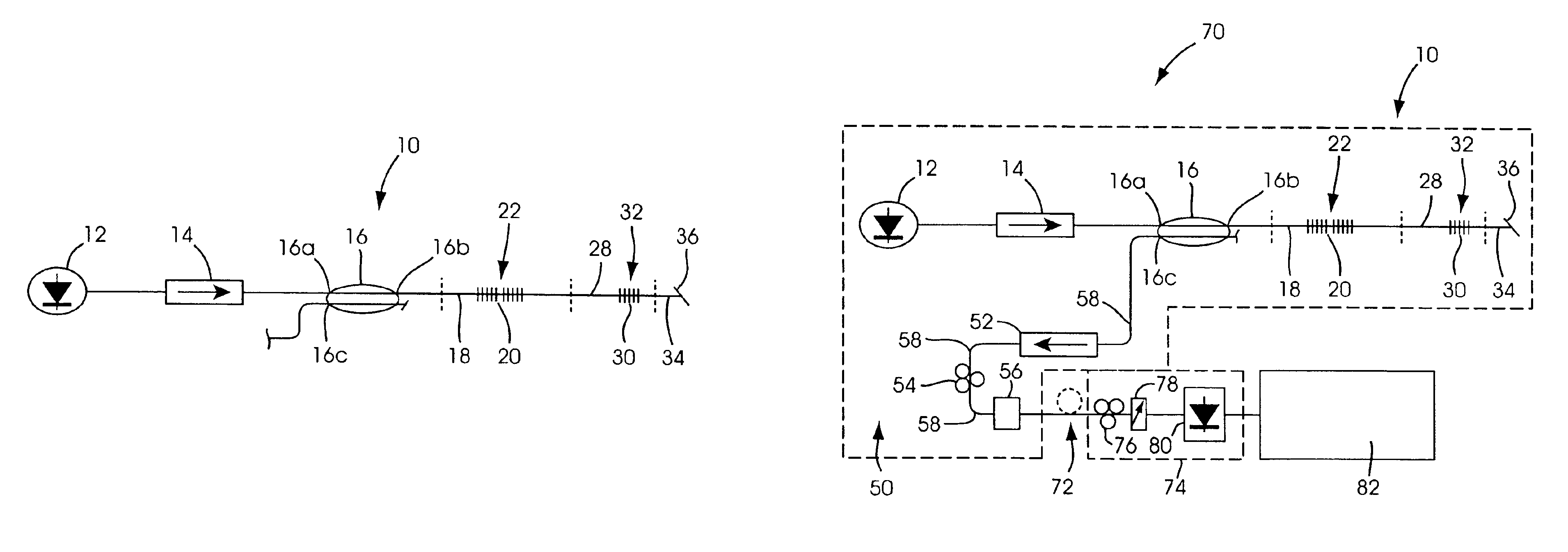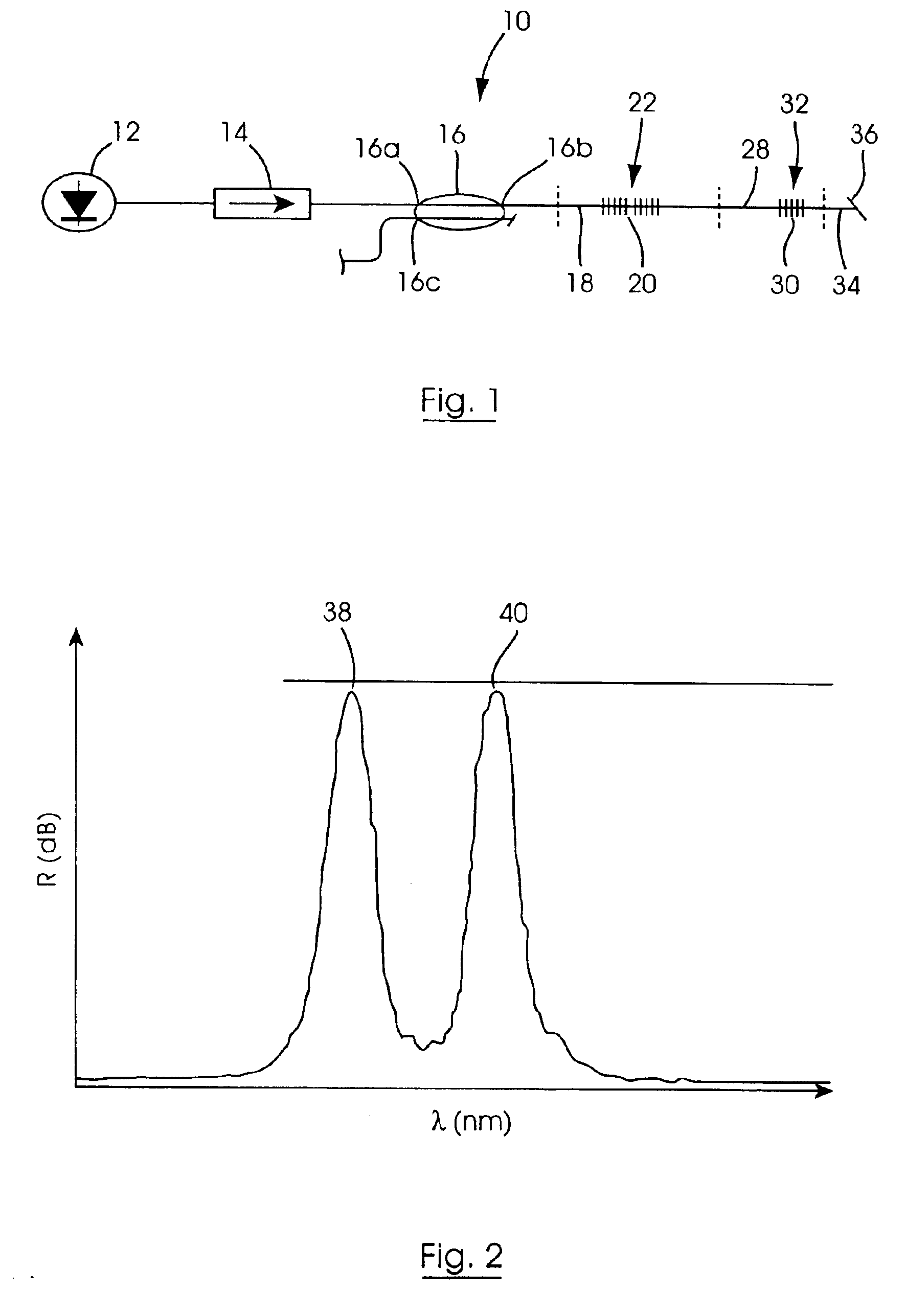Generating electronic carrier signals in the optical domain
a technology of electronic carrier signals and optical domains, applied in the direction of optical resonator shape and construction, electromagnetic transmission, transmission, etc., can solve the problem and achieve the effect of narrow optical linewidth
- Summary
- Abstract
- Description
- Claims
- Application Information
AI Technical Summary
Benefits of technology
Problems solved by technology
Method used
Image
Examples
Embodiment Construction
[0045]Referring to FIGS. 1-8 of the drawings, one particular embodiment of the invention is directed to a dual wavelength optical waveguide laser, which in this example takes the form of a dual wavelength fiber grating distributed feedback (DFB) laser 10, constructed as follows. A pump laser diode 12 is optically coupled, via a 980 nm optical fiber isolator 14, to a first port 16a on one side of a 980 nm / 1550 nm wavelength division multiplexed (WDM) fiber coupler 16. The pump laser diode 12 is operable to generate a laser output signal having a wavelength of 980 nm. The isolator 14 reduces the possibility of any back-reflections from the other components of the laser 10 from disturbing the pump laser 12.
[0046]A first port 16b on the other side of the WDM coupler 16 is coupled to a first optical waveguide, which in this example takes the form of an erbium-ytterbium (Er—Yb) co-doped optical fiber 18. A first optical waveguide grating device 20, which in this example comprises two co-l...
PUM
 Login to View More
Login to View More Abstract
Description
Claims
Application Information
 Login to View More
Login to View More - R&D
- Intellectual Property
- Life Sciences
- Materials
- Tech Scout
- Unparalleled Data Quality
- Higher Quality Content
- 60% Fewer Hallucinations
Browse by: Latest US Patents, China's latest patents, Technical Efficacy Thesaurus, Application Domain, Technology Topic, Popular Technical Reports.
© 2025 PatSnap. All rights reserved.Legal|Privacy policy|Modern Slavery Act Transparency Statement|Sitemap|About US| Contact US: help@patsnap.com



